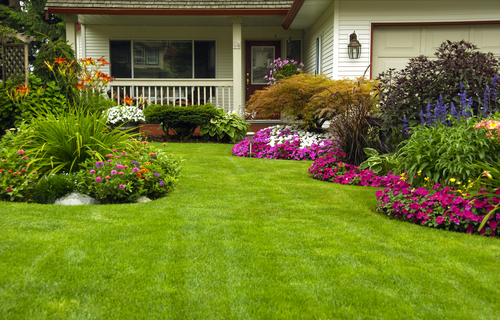Archive for Landscape Design
Spring Landscaping Ideas For The Perfect Garden
Landscaping during spring can give you a luxurious and glamorous looking garden. Spring is classified as one of four temporal seasons experienced here on our planet which occurs just after the winter and just before the summer. When most people refer to spring or ‘springtime’, to them it becomes synonymous with ideas of rebirth, rejuvenation, renewal, resurrection and regrowth.
Nevertheless due to the cold conditions brought on by the winter season it is highly likely that most plants, trees and shrubs will suffer substantial damage during the early part of the year. If you have a garden in and around your surrounding property protecting your plants from any damage or destruction should always be a major concern.
Landscaping Your Property During Spring
Since the springtime is seen as a time of rebirth and regrowth there are some additional tips that gardeners can employ to ensure that they maintain a safe and nurturing environment throughout their gardens.
Due to the harsh, cold, conditions of winter debris inevitably accumulates in grass and on lawns. Since lawns require no more than ½ an inch of buildup gardeners should rake away any excess debris from their grass or lawns. This also helps to control thatch on the lawn and offers an opportunity to look for matted areas. Raking will also allow the lawn a chance to breathe again.
Over time lawns can become compacted especially with a lot of traffic or excess debris so to help with this it is highly recommended that gardeners aerate lawns in order to avoid this. If you are not sure how to aerate your lawn you can always contact a professional landscaping service to come and assist with this.
Apart from some lawns having excess debris some can be found to have a lot of patches and bare areas. Overseeding is one method gardeners can utilize and refers to the applications of seeds to fill bare or patchy spaces in lawns . Although this alternative is generally recommended for the fall season it can be done in the spring if absolutely necessary.
If you have a sprinkler system the springtime would be the ideal time to inspect it for any damages and if any to perform repairs. However if all is well and no issues are detected this would also be the perfect time to have your system reactivated.
The spring is also a good time to apply some pre-emergent weed control to plants. This serves significantly control weeds in gardens as well as to act as a barrier against future weed seedlings. Gardeners should always keep in mind that this should be done before applying any organic fertilizers and to ensure effective weed control applications should be done on a continued basis in and through the summer.
Mulching is another effective system that gardeners ought to practice during spring as it offers several benefits to existing or emerging flowers, plants and trees in gardens. Placing mulch in flowerbeds and around plants and trees helps them retain moisture during the early spring months. It also helps to reduce the temperature of plant roots and insulates them in event of an unexpected freeze during the spring.
It is only natural that all gardeners, landscapers and farmers alike all want their gardens or crops to thrive and be protected so by utilizing a network of useful informative and effective tips available online or by hiring professional services those goals can ultimately be achieved. Contact us for more information.
Winter Lawn Care Is Essential
Winter lawn care is no less as important as summer lawn care and maintenance. Your winter lawn care to-do list wouldn’t include activities such as trimming, weeding and watering however, care is important if you want your lawn to maintain its healthiness during the upcoming months. Depending on the location of your home you will have to determine the best plants to grow and maintenance methods to use in order to achieve this. If your lawn has weeds to spot-treat you can comply with these winter lawn care techniques.
Winter Lawn Care Techniques
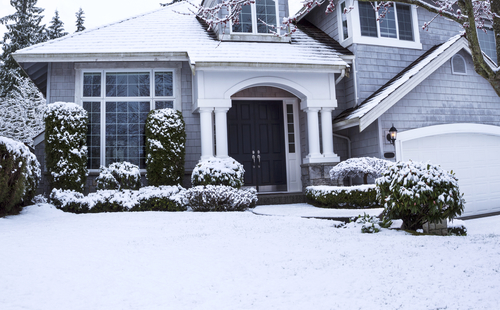
- Firstly, it is important to continue trimming your lawn even during the winter season. Note however, that there are several winter weeds that can’t endure frequent trimming and can die.
- Place a bag attachment onto your mower when trimming in order to capture seeds and prevent germination. In addition consider administering pre-emergent herbicide in the fall.
- Stop walking on your frozen lawn! Continuous walking or driving over a frozen lawn can kill its turfgrass crowns, which can create spring bare spots.
- If you can’t get all the autumn leaves eliminated before snowfall then not to worry as there is a solution for this. If the soil is damp, level it out carefully, as grass can pull up effortlessly. If you leave leaves on the grass during winter it can kill turf crowns. Moreover, they can lead to snow mold which can devastate your entire lawn.
Other Important Facts
Beware of vole trails that can be present in your lawn after snow fall. These mouse-like small creatures can be in both rural and suburban lawns. An abundant covering of snow on your lawn supply voles with the cover needed to devour grass roots in open lawn. this helps them to remain hidden from predators. As the snow liquefies their superficial runways become visible along the lawn veneer. The runways look like a tunnel without a top and soon as the snow softens you should trim your grass to prevent these critters from inhabiting your lawn.
If your lawn is wholesome you can leave out the grass seed. Another way to tackle the intrusion of voles is to obtain an outdoor cat. Contact us for more information and to inquire about our lawn care services.
Winter Landscaping – Its Actually Great For Your Lawn
During the latter time of the year, when the winter months begin to creep in, the outdoors transition into a dull and inhospitable place. All the activity then shifts to the indoors, however, for garden and lawn lovers alike, this is the ideal time to prep your lawns and gardens for the upcoming growing season. These are five easy tips you can consider, to keep your gardens and lawns in good shape during winter. Improve your winter landscaping techniques today!
Winter Landscaping Tips
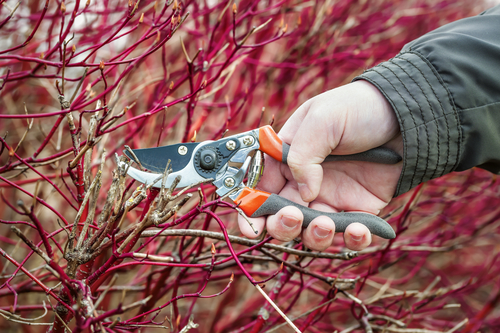
Pruning and trimming is a popular garden practice. This helps to shape, improve and maintain the general health of plants and trees. During the dormant, winter months carrying out these practices, tend to be fairly, popular and is encouraged,as during this time of dormancy, the vast majority of hedges, shrubs and trees, including evergreens and deciduous trees, can be pruned or trimmed, without causing damage to the plant or tree.
Heavy snowfall and high winds, usually come with the seasonal winter storms.Therefore it is recommended, that prior to this time, all high or decayed branches, be pruned or entirely removed. If or when stormy conditions occur, these decayed branches or dead trees can quickly transform into falling hazards, that pose serious threats of injury. With that said, not everyone may be confident enough to carry out pruning or trimming effectively. So we recommend, consulting a local, insured, tree removal service, who will handle all your trimming and pruning needs in a safe, professional and effective manner.
During the fall, leading into winter leaves are constantly falling, covering your garden or lawn from end to end with immense amounts of leaves. Cleaning and maintaining your lawns or gardens at this time, certainly proves to be a daunting task but is also very important. This practice allows your garden beds and lawns, to receive the adequate amounts of sunlight required, for the optimal growth of plants as well as lush healthy lawns.
Another resourceful and efficient tip one can utilize in effort to prep your garden for the upcoming growing season, is getting a head start planting your garden beds. One can begin by pruning all shrubs, trees and perennials.Secondly, clear and remove all leaves and other debris from beds. Afterward, define the edges of beds by hard edging and creating a perimeter pass along the edge, with a lawn mower. Once these steps are completed you can then begin to install your bulbs for spring.
Protecting plants from any damage or destruction, has always been a major concern for most gardeners,with the harsh,winter weather being no exception. A clever tip that has proven effective, to equip gardeners for this extreme period, is the use of mulch. Mulch is used to retain soil moisture, regulate soil temperature, suppress weed growth, serves as an aesthetic and most importantly, acts as a shield against the unfavourable, winter, conditions. Planting beds should be mulched at a depth of 1.5 – 2 inches, to ensure plant roots remain the right temperature as well as to offer the right amount of protection from any potential damage.
Ensuring that you maintain a safe and nurturing environment throughout your garden, should be a priority of every gardener, especially throughout the winter season. This would include tying up loose branches of evergreens and boxwoods,turning off and covering all water spigots, storing away any remaining, organic, chemicals and making sure that irrigation systems are properly winterized. With that said, please remember not to use a broom or shovel while removing snow from branches as they will be frozen, fragile and could easily sustain damage. If in doubt this winter season contact DK Landscaping for more information.
Time To Mulch
There are various kinds of organic mulches used in garden maintenance. They act as fertilizers giving your soil the nutrients and conditions needed for sustainable growth. The State of California has policies in place that govern the production of mulch. Take a look at the various kinds of mulches that are highly recommended:
Types Of Mulches
Newspaper is becoming more widespread as mulch. Shredded newspaper has been used to maintain a damp environment for plants during shipping. This technique has been used on land as well. The way this all works is because layers of newspaper have excellent water retaining capabilities. They also help to control weeds and manage soil temperatures. This is an excellent benefit.
Shredded Leaves can be utilized as mulch any and everywhere in your garden. This is one of the most natural forms of mulch. Many gardens have flourished by using this technique.
Grass Clippings is used in the isolated areas of your garden where you want to restrain weeds. Grass clippings also are prone to mass down the water causing it not to pass through.
As part of your gardening maintenance plan you should utilize a mulching mower and leave back the clippings on the lawn to supply added fertility to your soil. Nonetheless, if you place your grass clippings in bags do not discard of them, unless you have utilized weed killer or some other pesticide on your lawn. You should also know that synthetic lawn care items can be harmful to some flowers, so you may not want to use them in your garden. Grass clippings that are not treated should be placed in your compost bin or utilize as mulch for open areas are not yet planted.
Some gardeners hate to see leaves in their garden, and that’s a fact. Leaves really aren’t suitable for a formal garden. But if you cover your garden with the leaf mulch it tend to fusion into the garden in no time. This way you can still have the beauty of your garden untarnished while giving it the advantages of having mulch added.
During rainy times, unshredded leaves may mass together and fight off the water. If the leaves are too wet to shred, they can still be used. If you are considering implementing this gardening improvement technique then seek an expert gardening service. Contact us the gardening experts for more sound advice and gardening maintenance.
How to Transplant Shrubs in Summer
The best times of year to transplant trees and shrubs are spring and fall; however, certain situations may make it necessary to move your plants outside of those seasons. For example, you may want to take your shrubs with you if you are moving or you may have to move the plant because of the weather.

If you find it necessary to move a plant during the warmest part of the year, you will need to take certain steps to ensure its health. Here are some tips on how to move shrubs in the summer without harming them:
- Choose the Right Location
Transplantation represents a dramatic change and a plant will have to adapt to its new environment slowly in order to survive. This means that you will have to keep factors like sunlight, soil drainage and soil pH in mind when choosing a new location. - Dig an Appropriate Hole
You will need to dig a hole that is approximately twice as large as the shrub’s root system. The additional space allows the roots to grow into the new site comfortably. - Carefully Remove the Shrub
Work carefully to avoid damaging the root system when uprooting shrubs. You will want to take as much of it as you can. You will also want to move some of the soil from the old location to the new one. You can place larger shrubs on a tarp and drag them to the new location along with some of the soil. - Add Adequate Water to the New Hole
You will want to wet the hole thoroughly before placing the shrub into it but avoid oversaturating it as this can cause the shrub’s roots to rot. - Place Shrub in the New Hole
Along with the shrub, place some of the soil from the old location into the hole as well as some potting soil. Pat the soil down around the base to ensure that the shrub stays upright. You can add watering stakes to the ground so that the shrub can water at root level but this is not essential. Be careful to avoid damage to the roots when installing the watering stakes.
The quality of your landscaping plays a major role in your ability to enjoy your yard and in your property value. If you need help with moving shrubs or with any other aspect of landscape maintenance, contact us today. Our experienced landscaping crews know how to move your shrubs and trees quickly and without damaging them.
Plant Trees and Shrubs That Add Interest to a Garden in Winter
Tons of homeowners run down to their local nursery to pick up shrubs and small trees for their garden design. You can actually find some great deals by purchasing cold-hardy plants, shrubs and trees out of season, so to speak, prior to the thermometer dropping in September and October.
The problem is that these same homeowners don’t exactly know what to do with their cold-hardy plants and shrubs or whether they can set to work planting them in late fall and early winter or if they have to wait until the weather warms up in spring to put on their gardener’s hat.
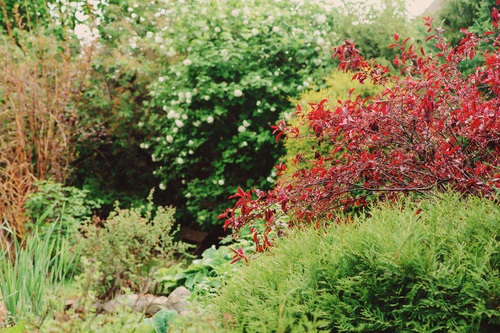
How to Deal with Cold-Hardy Trees, Plants and Shrubs
What you may not know is that a variety of shrubs, plants, perennials, and trees can survive and even thrive in – what the USDA terms – the coldest planting zones in the country.
So, the question no doubt on the minds of everyone in these more frigid hardiness zones is whether to keep your trees and shrubs in pots throughout the cooler months or whether you can get started in late fall.
The answer’s that you can choose to do either, but you can definitely set to work right now, start planting in the late fall, and beautify your garden and outdoor decor throughout the winter and into the verdant spring months. Evergreen shrubs and hawthorn are two popular options.
What you still want to do, though, is manage your expectations and perhaps set your sights lower than a veritable Garden of Eden springing up in the crisp winter months. Here’s how to get started:
- Follow Nature’s Lead
You would be very hard-pressed to find potted plants, much less artificial ones, growing wild out in nature.
Taken that to its logical extension, your plants and shrubs will typically be healthier and happier by being put into the ground than staying in a plastic pot in your garage throughout the winter season.
- What Should I Plant?
Evergreen garden shrubs are but one example of resilient shrubs that can really add another dimension to your garden and front lawn during the winter without causing too much heartache in terms of worry or added energy you have to expend to make it happen.
Both conifer trees and evergreen shrubs can make it through winter in one piece, and the needle-leaf style of evergreen shrubs are normally considered more robust in cold-hardy climates.
Yew and Juniper are two kinds of evergreen garden shrubs that are resilient, tolerant to cold temperatures and drought conditions, yet really benefit from developing their root networks early in the fall (if you’re thinking about planting these early) as opposed to waiting until early-to-mid spring.
Deciduous trees like the Japanese Maple, eucalyptus, birch or hawthorn tree can even demonstrate fruit growth in the winter, which really adds a splash of color and interesting contrast against the icicles and powdery, white winter snow.
- Going About It the Right Way
Year-round plants, shrubs and trees don’t actually need the extra shot in the arm that less hardy flora might.
There’s no need to use a crazy amount of fertilizer or growth agents in the late fall to get the most out of these trees and shrubs throughout the winter.
Still, realize that many of these flora grow upwards and their root networks are delicate at this early stage. Try not to move around or prune these shrubs early in their development.
Much and a little water in the fall are probably all these plants need to avoid desiccation and thrive for you year-round. Contact us today for more tips or help in getting started.
Xeriscape California Plant List
California boasts a rich variety of flowers, trees, and flora ~ a somewhat surprising fact considering the prevalence of arid landscapes and drought. Home and business owners who want an eco-friendly, economic landscaping solution would be wise to utilize xeriscape, a form of landscaping that combines drought-resistant plants, efficient irrigation, and thoughtful garden design to create beautiful outdoor spaces. To get started, check out this list of plants that will make a wonderful addition to your xeriscaping.
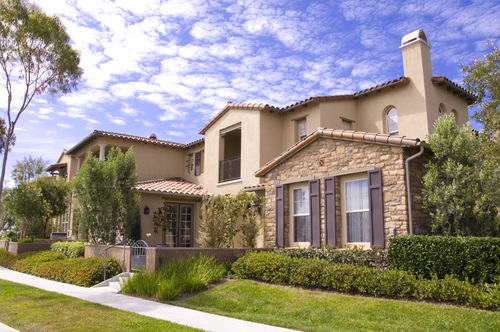
Aloe
Aloes are a variety of succulents that do well in dry environments. One common variety is Aloe Vera, also known as burn plant due to its ability to soothe sunburn. Aloe Vera can grow up to 3 feet in height and produces lovely yellow flowers. Although commonly grown as houseplants, Aloes can also thrive in xeriscape environments due to their preference for bright light and dry, well-draining soil.
Agave
This xeriscape-friendly plant is known for its use in making tequila! There are many different varieties, but all have a main taproot that discourages transplanting after they have been installed. A loose, well-draining soil is a must and plants prefer to dry out completely between watering. Agave tends to bloom once, then die, but often produces pups, or baby plants, that can replace the original.
Mexican Sage
A member of the Salvia family, Mexican Sage is a perennial that produces gorgeous purple or white flowers that can make it a stunning xeriscape addition. Moisture requirements are somewhat higher than for previously mentioned succulent varieties, so it may not be ideal for very arid locations. However, it is drought tolerant and often attracts pollinators like butterflies and hummingbirds.
Verbena
Verbena comes in many varieties, including lemon, rose, and purpletop, just to name a few. Lemon verbena smells fantastic and can be used to make herbal tea. They can be grown as annuals or perennials and are resistant to heat and drought. Depending on the variety you choose, they can get quite tall and bushy, often producing beautiful, brightly colored flowers.
Honeysuckle
Most honeysuckle vine varieties smell fantastic, attract pollinators, produce beautiful flowers, and come back year-after-year. Being heat and drought resistant and fairly low maintenance makes them a wonderful addition to xeriscape areas. Full to partial sun and a well-draining soil are preferable. A fence, trellis, or other support system helps them grow to their full potential.
Sedge Grass
Sedges are a large family of grasses that work well in place of more high maintenance turf grass. They tend to be adaptable and often require little water. California meadow sedge is native to the Pacific coast area and tolerates heat, drought, and even foot traffic. It can be used as part of an eye-catching xeriscape focal point or used to replace a more traditional lawn. Since it requires very little mowing and no fertilizers or other chemicals, sedge grass is a great, no-fuss addition to any landscape.
Hollyleaf Cherry
The hollyleaf cherry tree is a shrub native to the California coast that produces lush, evergreen leaves, cream colored flowers, and edible fruit. The fruit is not very fleshy though, so it probably won’t become your favorite snack, but birds and other wildlife may appreciate it. Hollyleaf cherry is very tolerant of drought, thrives in full to partial sun, and prefers well-draining soil.
Xeriscape landscaping techniques are sure to become more popular as awareness grows about the need to conserve water and choose drought resistant plants. DK Landscaping strives to create beautiful landscapes that function well in the natural environment, so call us or contact us via email today to get started on a xeriscape project for your home or business.
6 Xeriscape Ideas
Xeriscape gardens are specially built to require little to no irrigation. Instead, they’re specially constructed to use minimal water, and conserve the natural water (like rainwater) that enters their system. The end result is an environmentally-friendly garden that’s still beautiful.
Because xeriscape involves such skill and knowledge, it can be tricky to know where to get started. But with these six xeriscape ideas, you’ll get a head start on planning your garden.
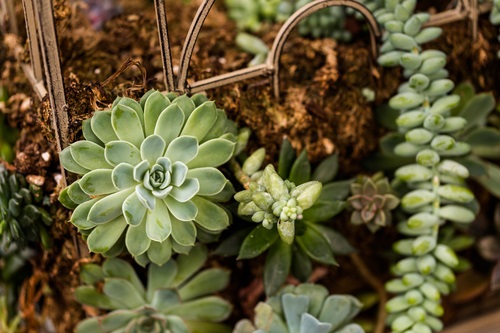
1. Think Beyond Cactus
Many people think xeriscape gardens are restricted to cactus and succulents. But most local plants are resistant to dry conditions in your area. Research native plants, or inquire with local gardening organizations, to find out what plants would flourish in your xeriscape garden.
2. Use Drip Irrigation
While many xeriscape gardens use no irrigation whatsoever, some use a form of irrigation called drip irrigation. Put small holes in a garden hose (or buy a hose specially perforated for this purpose), then lay it flat against the ground or near to it. Run this hose in the early morning or late evening, to minimize water loss due to heat.
The vast majority of the water through this slow drip system will get soaked up through the earth where it can nurture your plants, rather than getting lost to spray or evaporation. This is a good way to keep even drought-resistant plants through dangerous droughts, or to encourage your blooms to look their fullest during a dry season. To further maximize this method’s potential, place any plants that need more water close together, so they’re easier to water.
3. Try Perennials
Perennial flowers are more likely to be drought-resistant than annuals, and they’re lower maintenance, too. Try planting a group of perennial blooms close together to maximize their visual impact. For additional beauty, choose several perennials that will bloom at different times of year and plant them throughout your garden, to make sure you’ll always have something blooming.
4. Plan for Fall and Winter
Plants like Russian sage and many ornamental grasses dry out in the colder months. This is actually a positive: a well-planted standing will look like a dried bouquet. Add these to your xeriscape garden so there’s always something to draw the eye, no matter the season. You may even choose to avoid cutting back plants in colder months, to better take advantage of dried plants’ unusual shapes and appearances.
5. Fill Space with Rocks
Many xeriscape gardens gravitate toward gravel for open spaces. Gravel is great because it isn’t water-hungry like grass, and it holds moisture better than soil. But adding some beautiful rocks to cover space is a way to add texture and color to an area. Even just a small portion of rock garden adds character and variety to your xeriscape garden.
6. Play with Style
Not every xeriscape garden needs to look like a desert. With a little creativity and planning, xeriscape adapts well to any aesthetic or garden style. Don’t be afraid to think outside the box.
Xeriscape isn’t just environmentally friendly: it encourages creativity by imposing limits and forcing gardeners to think outside of comfortable tropes. Contact us and let us, plan and think creatively together. You’ll create a water-efficient space that’ll look its best in any season.
About Watering Lawn After Mowing
Engaging in watering lawn? As the weather heats up, more people will be venturing out into their yards to mow, plant, trim, and generally get things spruced up. Mowing the lawn becomes an almost constant chore from the time the dandelions pop up in the spring until the leaves fall in the autumn. Whether you choose to mow your own lawn or hire experienced professionals, you may have some questions about watering your lawn after mowing.
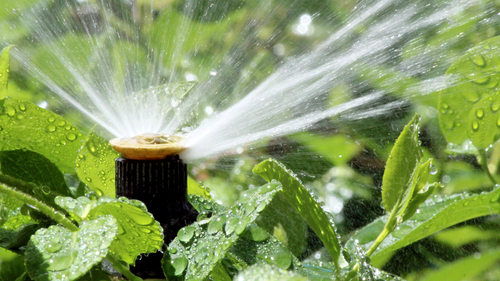
Setting a Schedule for Mowing
While mowing and watering are two separate chores which should both be scheduled, it’s important to leave room for flexibility for the days of drought and when it pours. The lawn needs mowing when the grass reaches a certain height and watering when the grass is dry. Those two events may or may not occur at the same time. Establishing a schedule to address these needs will help you make sure you aren’t wasting water or time. You should mow when grass reaches a height of about 3 to 4.5 inches. When it’s tall enough, trim it to about 2 to 3 inches. Depending on the season and type of grass, you may need to schedule mowing as often as every 5 days.
Setting a Schedule for Watering
Schedule your watering so that grass gets about 1.5 inches of water per week during the growing season. Time of day is also important to consider. Morning is an ideal time to water because it allows the grass to soak up the water before the heat of the day. Watering in the middle of the day wastes water because the sun speeds evaporation. In addition, watering too late in the day leaves insufficient time for the water to soak in before it cools off at night, potentially leading to fungal growth or other disease.
Knowing When to Water by the Color of Your Grass
Determining that grass needs water is a little tricky, but there are some things to look for. Grass that fades from bright green to a dull, bluish gray is probably thirsty. Also, look for signs of wilting, such as curling grass blades. Another trick is to look for footprints in the grass after you’ve been walking in the yard. Hydrated grass will spring back more than dried grass so, if you can see that you’ve left a trail, it’s time to water. One foolproof way to know if your grass needs a drink is to use a simple moisture meter, available at many garden stores. Or, utilize a rain gauge so that you know how much natural precipitation has fallen during the week.
A Pristine Lawn Takes Time and Attention
So, should you water after mowing? The simple answer is yes, but only if your grass needs the moisture. If you’ve had a rainy week and the grass isn’t showing footprints or other signs of dehydration, you can probably put off watering for a bit longer. If your lawn does need to be mowed and watered, make sure you schedule it for early in the day to avoid moisture evaporation and problems with disease. Don’t water your grass before mowing. Wet grass tends to clump together on the lawn which could suffocate the grass underneath or promote fungal growth. Also, it could clog up your mower.
Mowing is an essential aspect of home maintenance. A freshly-mowed lawn looks great, feels wonderful on bare feet, and helps keep invasive weeds in control. To handle all of your mowing needs, get in touch with the professionals at DK Landscaping today. You can trust us to keep your yard looking great for all seasons.
Inexpensive & Easy Backyard Ideas
Spring is just around the corner, and what better time than now to give your backyard a makeover? Whether you have a cozy yard or a sprawling retreat, there are a host of inexpensive and easy backyard ideas you can try that will enhance your lawn, garden and outdoor living areas.
Easy Backyard Ideas
- Create a living fence by decorating a wall with an espaliered tree. You don’t have to be a master gardener to do it, and it gives your yard a high-end look without the high-end expense. Espaliered trees are a great way to make a small yard look like it’s filled with greenery.
- Here’s one of the best money-saving backyard ideas. For an inexpensive way to add hardscaping – walkways, edging and retaining walls – ask your landscaping company if they have stone leftovers. Stacked together, the different shapes, sizes and colors make a beautiful elevated garden section that looks incredibly natural. Use low-growing groundcovers and other perennials to present a gorgeous burst of color.
- Sometimes, the simpler the better backyard ideas win the day. Create low-cost nooks by rearranging garden furniture in separate areas of the yard; perhaps one area for eating and another for relaxing. The idea is to create conversation zones where family and guests can gather to catch up and enjoy themselves. No need to buy new furniture – but coordinated pillows and chair pads are great for giving each area its own distinct look.

- One of the easiest backyard ideas for adding color is by using containers that are filled with annuals. Annuals are less expensive than perennials and shrubs but really pack a punch when arranged in containers. For a calm, retreat-like feel, use vessels of one color, though the shapes and sizes can differ.
- If you’re in need of a new piece of furniture, but it’s just not in the budget this year, try this fun DIY seating area constructed from low-cost concrete blocks that are fitted with wood beams and then a foam cushion. True sophistication for little money!
- Outdoor lights are one of everyone’s favorite backyard ideas. They’re fun, they say celebration and their sparkle adds a warm glow to backyard gatherings. Use different color string lights or LED cords to wrap a tree or line a pathway. You can even run a set down the length of the table for a lovely light to dine by.
- If you want to cut back on how much water-hungry lawn you have, check out interesting, less-expensive paving materials such as crushed rock and gravel. They’re perfect for placing underfoot at outdoor seating and dining areas. If you’re in love with the look of traditional, larger pavers, use fewer of them interspersed in your grass in order to cut down on your total outlay.
- Many hardscape elements, such as trellises, can be found at flea markets or garage sales. You may even have enough scrap materials around the house to construct one. Who doesn’t have a bunch of old frames packed in boxes just waiting to be used “one day?” Take some inspiration from this beautiful piece and put those frames to good use. If you love the rustic look, there’s no need to varnish or paint them. Trellis are one of the best backyard ideas for adding height and defining backyard traffic flow.
There’s always a way to get the beautiful backyard you’ve always wanted without having to break the bank. These fun and beautiful backyard ideas are the perfect way to get started!


